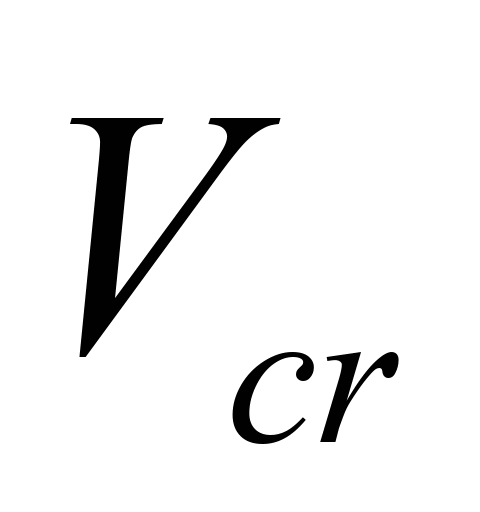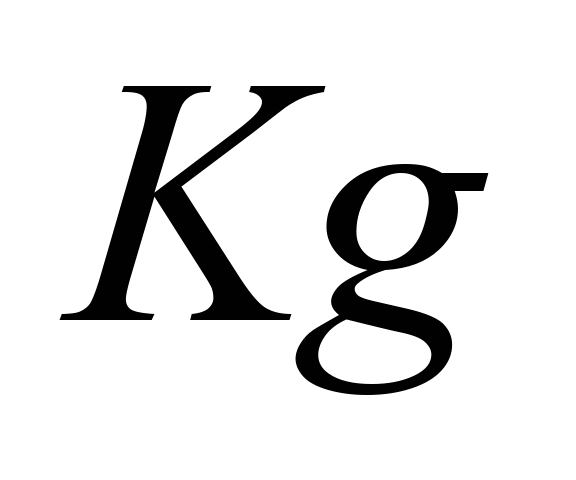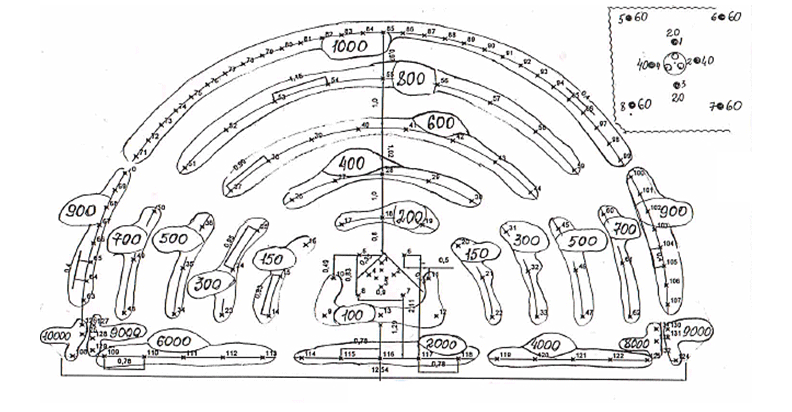ISSN
2307–3489 (Print), ІSSN
2307–6666
(Online)
Наука
та прогрес транспорту. Вісник
Дніпропетровського
національного університету залізничного
транспорту, 2016,
№
5
(65)
ТРАНСПОРТне
будівництво
ТРАНСПОРТне
будівництво
UDC 624.191.3
V.
D. PETRENKO1*,
O. L. TIUTKIN2*,
S. T. PROSKURNIA3*
1*Dep.
«Bridges and Tunnels», Dnipropetrovsk National University of
Railway Transport named
after
Academician V. Lazaryan, Lazaryan St., 2, Dnipro, Ukraine, 49010,
tel. +38 (056) 373 15 53,
e-mail
1937@gmail.com, ORCID 0000-0002-5902-6155
2*Dep.
«Bridges and Tunnels», Dnipropetrovsk National University of
Railway Transport named
after Academician V. Lazaryan, Lazaryan
St., 2, Dnipropetrovsk, Ukraine, 49010, tel. +38 (056) 373 15 53,
e-mail tutkin@mail.ru, ORCID 0000-0003-4921-4758
3*Main
engineer of State Enterprise «Zachiddorvybuchprom», Ternopil,
46006, Gayova St.,47,
e-mail zvubyxprom@ukr.com, ORCID
0000-0004-4811-4325
FEATURES OF
DRILLING-AND-BLASTING
AT CONSTRUCTION OF BESKIDSKIY TUNNEL
Purpose. In
this article it is necessary to analyze the possibility of developing
technology and increasing its efficiency during the Beskidskiy tunnel
construction in difficult engineering and geological conditions.
Methodology. The authors have performed analysis of the
technological level of mining and construction works, new technique,
equipment and production. One of the important issues of blasting
operation is to ensure the seismic safety, acting at a distance of 30
m in the axes of single-track tunnel, as the distance to it will be
20 m from the nearest charge in the laying tunnel. This problem was
solved by applying the combined blasting of blast-hole charges with
delay-action and long-delay ways. Herewith the total mass of charges
in the stope was divided into three groups, in which the first group
is exploded by short-delay firing with, and the second one is
exploded by short-delay firing too with intervals of 200…400
ms, the third is exploded by long-delay blasting at intervals of
500…10000 ms. The combined blasting of short-delay charges and
delay action ones let significantly reduce seismic action at a mass
explosion of charges when driving of double-track railway tunnel of a
large cross-section. Findings. The paper presents the
developed technology model, describing dependence of the machines
from engineering and geological conditions. The methodology of
drilling and blasting works at the construction of the tunnel callote
and stross as well as a technique of arrangement determination and
intervals of shot-delay and delay blasting of blasthole explosive
charges was developed. Maximum permissible concentration of gases and
vapours at blasting was presented. The calculations showed that the
maximum level of gas contamination of the working area in Beskidskiy
tunnel is achieved at blast operations. In accordance with this
ventilation of the tunnel when driving is carried out by independent
systems with mechanical ventilation by blowing using mine fans of
special mining enterprises. Originality. The developed
seismically safety charge masses are based on the well-known state
about antiseismic blasting regulations. Practical value. The
authors proposed and grounded the efficient technology for reduction
to practice of drilling and blasting works (with dividing of the
tunnel cross-section into the calotte and stross during of the
Beskydy high-mountain tunnel construction. The results of
technological experiment are presented.
Keywords:
drilling and blasting works; technology of high-mountain tunnel
constructing; railway tunnel; blast seismic; shot-delay and delay
charges
Introduction
In contemporary environment the
construction of railway tunnels has found a widespread application
in difficult engineering and geological conditions. The most
significant example of this building is the construction of basic
Gotthard tunnel in the Alps, length of 57.3 km, completion is
scheduled for 2016 [3]. A distinctive feature of tunneling driving
of such a type is the extensive use of tunnel boring machines in
hard and strongest rocks.
However, drilling and blasting
method for breaking rocks in the tunneling driving including the
workings of large section can be successfully used in such
conditions [14–16].
Purpose
In Ukraine,
currently tunneling driving of Beskydskiy double-track tunnel in the
Carpathians is being completed. It is under construction in order to
increase rail logistics between Western and Eastern Europe with
using tunnel. Its length is 1850 m. Alternation of rocks of
different types and strength, including sandstone, siltstone and
mudstone with Protodyakonov scale of hardness respectively 6…8,
4…6 and 2…3 occurs in geological structure on construction
sites. Hydro-geological conditions are characterized by the expected
inflow of water in the range of 5…10 m3/day.
Tunneling driving of double-track railway tunnel is carried out with
the division of the face on calotte and stross with the way of lower
ledge using drilling-and-blasting operations (DBO) [8] in to
“bricked-up windows” with movement overlapping of trains in the
Beskydskiy acting tunnel, located 30 meters away from the tunnel
under construction. Moreover, the existing single-track tunnel was
built in 1886.
Drilling operations are carried
out when driving with the help of a self-propelled double beam
electro-hydraulic unit “Sandvik DT 820-C” from Finland. At this
the diameter of holes is 45 mm, and their length is 1.5; 2.3; 2.8 m
when calotte driving and 4.2…4.5 m in stross development.
Correspondingly stope length, depending on the engineering and
geological conditions when calotte driving is 1.25, 2.0 and 2.5 m,
and stross one – 4.0…4.2 m.
Drilling of holes is produced by
blowing with compressed air and water washing. Compressed air is
supplied from the mobile compressor stations, located on
near-entrance sites, and water via a pipeline that is laid as
far as tunneling driving.
DBO nameplate is made at the
stage of pre-production of works and refined accordingly to the
results of at least three conducted test blastings [2, 11]. Breaking
of rocks with blast-hole charges is provided to carry out using the
method of successive contouring with mandatory application of
delay-action and long-delay blasting of blast-hole charges groups in
the following order depending on the stope size, mentioned above:
coal-cutting, contour-hole, under contour, contour, plantar and
under-bottom. Deceleration time (interval between multiple-shot
blasting) taking into account rock hardness is from 20 to 10000 ms.
For blasting, the following
blasting explosives are applied: ammonite № 6 ZhV – for dry and
flooded holes, Grammonit 79.21 – for dry holes, ammonal M5 – for
dry and flooded holes, gremix – for dry and flooded holes. At this
cartridges of 28.32 and 36 mm are used [9].
At complex blasting operating
two ways of charges blasting are applied: non-electric and electric
[9, 10]. The non-electric initiation system (NIS) «Impulse» is
used at non-electrical method. It includes the UNS-SH and UNS-ShK
devices, detonating cord (DC), a main waveguide, connecting tube and
the starting device. Unlike traditional methods of initiating
explosive charges BB, this system has an increased level of
security, since, due to insensitivity and stray currents it allows
carrying out drilling works without de-energizing of power
equipment. In electric mode NIS system «Impulse», UNS-SH device,
UNS-ShK, DC and two detonators, type ED-1-3-T are also applied.
Methodology
One of the important issues of
blasting operation is to ensure the seismic safety, acting at a
distance of 30 m in the axes of single-track tunnel, as the distance
to it will be 20 m from the nearest charge in the laying tunnel [1,
4, 6, 7, 13].
Seismic safety charge masses for
complex engineering structures, like undoubtedly Beskydskiy tunnel
is, can be calculated by the formula according to the work [5],

where
 – permissible critical velocity fluctuations, is determined from
table 80 [5] and equal to
– permissible critical velocity fluctuations, is determined from
table 80 [5] and equal to
 ;
;
 – coefficient depending on the conditions of work and the state of
the engineering object is accepted within
– coefficient depending on the conditions of work and the state of
the engineering object is accepted within
 ;
;
 – coefficient, which depends on the distance to the object, and
equals to
– coefficient, which depends on the distance to the object, and
equals to
 ;
;
 – coefficient depending on the geological and engineering
conditions of works production and equals to
– coefficient depending on the geological and engineering
conditions of works production and equals to
 ;
;
 – distance to the protected object,
– distance to the protected object,
 .
.
Taking
 ;
;
 ;
;
 ,
as the result
,
as the result

Consequently, there is a certain
limit upon seismic at conducting of blasting operations with a
maximum total charge BB on the stope when calotte driving of 163.5
kg.
Findings
Solving this problem was carried
out by applying the combined blasting of blast-hole charges with
delay-action and long-delay ways (Fig. 1).
At this the
total mass of charges in the stope was divided into three groups, in
which the first group is exploded by short-delay firing with slow
intervals of 20…200
ms, and the second one is exploded by short-delay firing too with
intervals of 200…400
ms, the third is exploded by long-delay blasting at intervals of
500…10000 ms. The total mass of blast-hole charges, length of 1.3
m according to the 1st
DBO nameplate is 57.75 kg, blast-hole charges, length of 2.3 m –
the 2nd DBO nameplate – 124.3 kg, blast-hole charges, length of
2.3 m, the 3d
DBO nameplate – 163.5 kg. The total mass of the charges of the 1st
group, length of 1.3 m is 19.5 kg (33.8
%), length of 2.3 m – 27.5 kg (22.1
%) and a length of 2.8 m – 33 kg (20.2
%). Also, the charges mass of the 2nd
group, length of 1.3 m is 6.5 kg (11.2%), length of 2.3 m – 13.75
kg (11.1 %),
length of 2.8 m – 16.5 kg (10.1 %).
For charges of the 3rd
group, length of 1.3 m charges mass is 31.75 kg (55.0
%), length of 2.3 m – 83.05 kg
(66.8 %) and a
length of 2.8 m – 114 kg (69.7 %).
Thus, the maximum charges mass
in groups are less than the maximum permissible under the terms of
seismic safety.
As follows
from the analysis of presented data in the first group of charges
using short-delay blasting with intervals of 20…200
ms, wave interaction with the interference of longitudinal waves may
occur. Charges blasting of the second group with an interval of
300…400 ms is
performed after 100 and 200 ms. During this period a longitudinal
wave from the charges blasting of the first group at its speed in
rocks with a hardness coefficient
 ,
equal to 2500…4000 m/s, will cover the distance from the blasting
site of 250…400 m, namely the interaction of the waves and their
interference are completely excluded.
,
equal to 2500…4000 m/s, will cover the distance from the blasting
site of 250…400 m, namely the interaction of the waves and their
interference are completely excluded.
Long-delay blasting of charges
in the third group with intervals of 500…10000 ms will be
performed with a significant margin in time and distance from the
previous short-delay one. As a result the interaction of
longitudinal waves in the subsequent blasting is completely
excluded, which was confirmed by measuring the vibration velocity of
rock in active tunnel, which were equal to 0.13…0.15 m/s.

Fig.
1. Circuit of the disposition and connection of explosive charges
Thus, the combined blasting of
short-delay charges and delay action ones let significantly reduce
seismic action at a mass explosion of charges when driving of
double-track railway tunnel of
a large cross-section.
Originality and practical
value
The choice of
a rational system of ventilation in face working is of great
importance in these conditions. In accordance with current safety
regulations [9] and classic work upon the tunnel ventilation [12] in
workings, where people may be, the air must contain at least 20 % of
oxygen (by volume) in its composition. Carbon dioxide content in the
air of working at the places of operation should not exceed 0.5%,
and in the working with a common upward current – 0.75
%. In addition the air in active
underground workings must be free of harmful substances exceeding
the maximum permissible concentration (MPC), indicated in Table 1.
In accordance with the Safety
specifications the amount of air required for working ventilation,
should be calculated upon the largest number of people employed at
the same time in underground works, quantity of harmful gases,
calculated on a notional carbon monoxide in blasting operations,
upon harmful gases from arc welding operations, as well as of
harmful substances released during operation of machines and
mechanisms with internal combustion engines.
The
calculations showed that the maximum level of gas contamination of
the working area in Beskidskiy tunnel is achieved at blasting
operations, for which it is necessary to supply to the face of at
least 165 m3/min
of fresh air.
In accordance with this
ventilation of the Beskidskiy tunnel when driving is carried out by
independent systems with mechanical ventilation by blowing using
mine the fans of “Donventilyator” enterprise. The main technical
parameters of the fan are presented in Table 2.
Ventilation system operating
principle is as follows. Airing face after blasting is carried out
by air supply system from the Eastern portal with the help of an
axial fan of the main airing, type IN-14-10D (Table 2) installed
on near-entrance site. In the metal pipe with a diameter of 1600 mm
made of sheet steel, thickness of 2 mm, fresh air is fed into the
bottom-hole zone, which dilutes harmful gases and carries them over
the working to the East portal. Along with plenum system also runs
the local (near the face) exhaust system, which provides with CFT
equipment (Kormann), de-dusting exhaust air before its release to
the general air flow that moves over the working from the face up to
the portal. As advance of face the air supply pipeline, consisting
of 4 m long pipes, is increased (built up) to provide effective
ventilation.
Table
1
Maximum
permissible concentrations of harmful substances
|
Gases
and vapours
|
Chemical
formula
|
Maximum
permissible concentration
|
|
|
|
%
at volume
|
mg/m3
|
|
Carbonic
oxide
|
CO
|
0,00240
|
20
|
|
Oxides
of nitrogen in N2O3
equivalent
|
–
|
0,00010
|
5
|
|
Sulfur
dioxide
|
SO2
|
0,00035
|
10
|
|
Hydrogen
sulfide
|
H2S
|
0,00066
|
10
|
|
Acrolein
|
CH2=CH=CH=O
|
0,00008
|
0,2
|
|
Formaldehyde
|
H2C=O
|
0,00037
|
0,5
|
|
Hydrocarbons
in carbon equivalent
|
–
|
–
|
300
|
Table
2
The
main technical parameters of fans
|
№ п/п
|
Parameters
of fans
|
FA-14-10D
|
VMEFA-12-110
|
|
1
|
Nominal
impeller diameter, mm
|
1460
|
1200
|
|
2
|
Nominal
feed, m3/s
|
35
|
32
|
|
3
|
Flow
rate within the working zone, m3/s:
– minimum,
no less
– maximum,
no more
|
10
50
|
8
42
|
|
4
|
Maximum
efficiency
|
0,83
|
0,74
|
|
5
|
Nominal
full pressure, Pa
|
4700
|
2600
|
|
6
|
Revolutions
per minute
|
1500
|
1500
|
|
7
|
Fan
weight, kg
|
3650
|
2310
|
Conclusions
Thus, the high-level scientific
and technical preparation of operational materials upon technology
penetration in the rocks in difficult engineering and geological
conditions allows solving the problem of building the most complex
railway artificial construction – Beskydskiy tunnel.
LIST OF REFERENCE LINKS
Артемов, В.
А. Методические основы оценки
сейсмического действия массовых
взрывов по результатам анализа
сейсмовзрывных продольных и поверхностных
волн / В. А. Артемов, Г. П. Парамонов, А.
Н. Холодилов // Взрывное дело. – Москва,
2012. – № 108-65. – С. 287–295.
Безопасность
буровзрывных работ в промышленности
/ под ред. Б. Н. Кутузова. – Москва :
Недра, 1992. – 544 с.
В Швейцарии
открыт самый длинный в мире железнодорожный
тоннель: 57 км. [Electronic resource].
Available at: https://geektimes.ru-/post/276720/. – Title from
the screen. – Accessed : 20.09.2016.
ДСТУ 4704:
2008. Проведення промислових вибухів.
Норми сейсмічної безпеки. – Київ :
Держспоживстандарт України, 2009. – 11
с.
Кутузов, Б.
Н. Разрушение горных пород взрывом :
учеб. для вузов / Б. Н. Кутузов. – Москва
: Изд-во МГИ, 1992. – 516 с.
Петренко,
В. Д. Аналіз аварійних ситуацій в
тунелях, що споруджуються вибуховим
способом / В. Д. Петренко, В. Т. Гузченко,
О. М. Кулаженко // Проблеми та перспективи
розвитку залізн. трансп. : тези 76 Міжнар.
наук.-техн. конф. / Дніпропетр. нац. ун-т
залізн. трансп. – Дніпропетровськ,
2016. – С. 184–185.
Петренко,
В. Д. Зниження сейсмічної дії при
підриванні короткоуповільнених та
уповіль-нених зарядів / В. Д. Петренко,
О. Л. Тютькін, С. Т. Проскурня // Проблеми
та перспективи розвитку залізн. трансп.
: тези 76 Міжнар. наук.-техн. конф. /
Дніпропетр. нац. ун-т залізн. трансп. –
Дніпропетровськ , 2016. – С. 192–194.
Петренко,
В. Д. Розробка комплексу буровибухових
робіт при проходці Бескідського тунелю
/ В. Д. Петренко, М. В. Герніч, В. В. Барашкін
// Проблеми та перспективи розвитку
залізн. трансп. : тези 76 Міжнар. наук.-техн.
конф. / Дніпропетр. нац. ун-т залізн.
трансп. – Дніпропетровськ, 2015. – С.
286–287.
Полянкин,
Г. Н. Буровзрывные работы в тоннелестроении
: учеб. для вузов ж.-д. трансп. / Г. Н.
Полянкин. – Москва : ГОУ «Учеб.-метод.
центр по образованию на ж.-д. трансп.»,
2007. – 375 с.
Способи
ініціювання зарядів вибухових речовин
: навч. посіб. / В. В. Соболєв, А. В. Чернай,
В. М. Чебенко, О. В. Скобенко. –
Дніпро-петровскьк : ЛізуновПрес, 2013. –
88 с.
Справочник
взрывника / Б. Н. Кутузов, В. М.
Скоробогатов, И. Е. Ерофеев [и др.] / под
общ. ред. Б. Н. Кутузова. – Москва : Недра,
1988. – 511 с.
Фомичев, В.
И. Вентиляция
тоннелей и
подземных сооружений
/ В. И. Фомичев. – Ленинград : Стройиздат,
Ленингр. отделение, 1991. – 200 с.
Эстеров, Я.
Х. Буровзрывные работы на транспортном
строительстве : учеб. для техникумов
/ Я. Х. Эстеров, Е. Ю. Бродов, М. И. Иванаев.
– Москва : Транспорт, 1983. – 328 с.
Boidy,
E. Rock analysis of time-dependent behavior of a test gallery in
claystone / E. Boidy, A. Bouvard, F. Pellet // Tunneling and
Underground Space Technology. – 2002. – Vol. 17.
– Iss. 4. – P. 415–424.
doi: 10.1016/s0886-7798(02)00066-4.
Erion,
P. Construction Time Analysis For Different Steps In Drill – And
– Blast Method Of Hydro Power Tunnel Excavation / P. Erion, A.
Algest // J. of Engineering Research and Applications. – Vol. 5.
– Iss. 1 (Part 1). – 2015. – P. 95–101.
Patnik,
K. K. Uncertainty analysis of tunnel squeezing for two tunnel cases
from Nepal Himalaya / K. K. Patnik, B. Nirsen // Intern. J. of Rock
Mechanics and Mining Sciences. – 2007. – Vol. 44. – Iss.
1. – P. 67–76. doi: 10.1016/j.ijrm-ms.2006.04.013.
В.
Д. ПЕТРЕНКО1*, О. Л. ТЮТЬКІН2*,
С. T.
ПРОСКУРНЯ3*
1*Каф.
«Мости і тунелі»,
Дніпропетровський
національний університет
залізничного транспорту імені академіка
В. Лазаряна, вул.
Лазаряна, 2, Дніпро, Україна, 49010,
тел. +38 (056) 373 15 53, ел.
пошта 1937@gmail.com,
ORCID 0000-0002-5902-6155
2*Каф.
«Мости і тунелі»,
Дніпропетровський
національний університет
залізничного транспорту імені академіка
В. Лазаряна, вул.
Лазаряна, 2, Дніпро, Україна, 49010, тел.
+38 (056) 373 15 53, ел. пошта tutkin@mail.ru,
ORCID
0000-0003-4921-4758
3*Держ.
підприємство «Західдорвибухпром»,
вул. Гайова, 47, Тернопіль, 46006, ел. пошта
zvubyxprom@ukr.com,
ORCID
0000-0004-4811-4325
ОСОБЛИВОСТІ
КОМПЛЕКСУ БУРОВИБУХОВИХ РОБІТ
ПРИ
БУДІВНИЦТВІ БЕСКИДСЬКОГО ТУНЕЛЮ
Мета.
В статті необхідно
проаналізувати можливість розробки
технології проведення буровибухових
робіт та підвищення її ефективності
при будівництві Бескидського тунелю
в складних інженерно-геологічних
умовах. Методика.
Автори виконали аналіз технічного
рівня гірських і будівельних робіт,
нової техніки, обладнання та виробництва.
Використовувалось запропоноване
забезпечення системою безпеки тунелю,
який експлуатується (враховуючи, що
відстань до нього 20 м від найближчого
заряду в споруджуваному тунелі). Для
цього була запропонована система
комбінованого вибуху шпурових зарядів
короткоуповільненим і уповільненим
способами, Враховано, що загальна маса
зарядів у заходці була розділена на
три групи, в яких перша і друга групи
підриваються короткоуповільнено, з
інтервалами уповільнення 20…200 мс та
200…400 мс відповідно, і третя – уповільнено,
з інтервалами 500…10000 мс. Застосування
цієї системи істотно знизило сейсмічну
дію масового вибуху зарядів при проходці
двоколійного залізничного тунелю
великого поперечного перетину.
Результати.
В статті представлена розроблена
технологічна модель, що описує залежність
техніки від інженерних та геологічних
умов. Була розроблена методологія
проведення буровибухових робіт при
будівництві калоти і штроси, а також
техніка визначення та улаштування
інтервалів короткоуповільненого і
уповільненого підривання шпурових
зарядів вибухових речовин. Представлена
максимально допустима концентрація
газів і парів при вибуху. Розрахунки
показали, що максимальний рівень
забруднення газами робочої зони в
Бескидському тунелі досягається при
вибухових процесах. Відповідно до
цього, при вентиляції тунелю, коли
проходка виконується по незалежним
системам із механічною вентиляцією
шляхом дуття, використовують шахтні
вентилятори спеціалізованих гірських
підприємств. Наукова
новизна. Розроблені
сейсмобезпечні зарядні маси базуються
на добре відомому положенні про
антисейсмічне підривання. Практична
значимість. Авторами
запропонована та обґрунтована ефективна
технологія проведення буровибухових
робіт (із розділенням поперечного
перерізу тунелю на калоту і штросу) при
прокладанні високогірного Бескидського
тунелю. Представлені результати
технологічних експериментів.
Ключові
слова: буровибухові
роботи; технологія проходки високогірного
тунелю; залізничний тунель;
вибухова сейсміка; короткоуповільнені
та уповільнені заряди
В.
Д. ПЕТРЕНКО1*,
А. Л. ТЮТЬКИН2*, С.
T. ПРОСКУРНЯ3*
1*Каф.
«Мосты и тоннели», Днепропетровский
национальный университет железнодорожного
транспорта имени
академика В. Лазаряна,
ул. Лазаряна, 2, Днипро, Украина, 49010, тел.
+38 (056) 373 15 53, эл. почта 1937@gmail.com, ORCID
0000-0002-5902-6155
2*Каф. «Мосты и
тоннели», Днепропетровский национальный
университет железнодорожного транспорта
имени
академика В. Лазаряна, ул.
Лазаряна, 2, Днипро, Украина, 49010, тел.
+38 (056) 373 15 53, эл. почта tutkin@mail.ru,
ORCID 0000-0003-4921-4758
3*Гос.
предприятие «Западдорвзрывпром», ул.
Гаевая, 47, Тернополь,
46006, эл. почта zvubyxprom@ukr.com,
ORCID0000-0004-4811-4325
ОСОБЕННОСТИ
КОМПЛЕКСА БУРОВЗРЫВНЫХ
РАБОТ ПРИ
СТРОИТЕЛЬСТВЕ БЕСКИДСКОГО
ТОННЕЛЯ
Цель.
В статье необходимо проанализировать
возможность разработки технологии и
повышения ее эффективности при
строительстве Бескидского тоннеля в
сложных инженерно-геологических
условиях. Методика.
Авторы выполнили анализ технического
уровня горных и строительных работ,
новой техники, оборудования и производства.
Использовалось предлагаемое обеспечение
системой безопасности тоннеля, который
эксплуатируется (учитывая, что расстояние
до него 20 м от ближайшего заряда в
строящемся тоннеле). Для этого была
предложена система комбинированного
взрыва зарядов короткозамедленным и
замедленным способами, Учтено,
что общая масса зарядов в заходке была
разделена на три группы, в которых
первая и вторая группы подрываются
короткозамедленного, с интервалами
замедления 20…200 мс и 200…400 мс соответственно,
и третья –
замедленно,
с интервалами 500…10000 мс. Применение
этой системы существенно снизило
сейсмическое воздействие массового
взрыва зарядов при проходке двухпутного
железнодорожного тоннеля большого
поперечного сечения. Результаты.
В статье представлена разработанная
технологическая модель, описывающая
зависимость техники от инженерных и
геологических условий. Разработана
методология проведения буровых и
взрывных работ при строительстве
каллоты и штроссы тоннеля, а также
техника определения расстановки и
интервалов короткозамедленного и
замедленного взрывания шпуровых зарядов
взрывных веществ. Представлена
максимально допустимая концентрация
газов и паров при взрыве. Расчеты
показали, что максимальный уровень
загрязнения газами рабочей зоны в
Бескидском тоннеле достигается при
взрывных процессах. Соответственно
этому, вентиляция тоннеля, когда проходка
выполняется по независимым системам
с механической вентиляцией путем
продувки, выполняется с использованием
шахтных вентиляторов специализированных
горных предприятий. Научная
новизна. Разработанные
сейсмобезопасные зарядные массы
основаны на хорошо известном положении
об антисейсмическом взрывании.
Практическая значимость.
Авторами предложена и обоснована
эффективная технология внедрения в
практику буровзрывных работ (с разделением
поперечного сечения тоннеля на калотту
и штроссу) при прокладывании высокогорного
Бескидского тоннеля. Представлены
результаты технологических экспериментов.
Ключевые
слова: буровзрывные работы; технология
проходки высокогорного тоннеля;
железнодорожный тоннель; взрывная
сейсмика; короткозамедленные и
замедленные заряды
REFERENCES
Artemov
V.A., Paramonov G.P., Kholodilov A.N. Metodicheskiye osnovy otsenki
seysmicheskogo deystviya massovykh vzryvov po rezultatam analiza
seysmovzryvnykh prodolnykh i poverkhnostnykh voln [Methodical
foundations of seismic action estimation of mass explosions upon
the analysis results of seismic explosion longitudinal and surface
waves]. Vzryvnoye delo – Blasting
Work, 2012, no. 108-65, pp. 287-295.
Kutuzov
B.N. Bezopastnost burovzryvnykh rabot
v promyshlennosti
[Drilling-and-blasting safety in industry]. Moscow, Nedra Publ.,
1992. 544 p.
V
Shveytsarii otkryt samyy dlinnyy v mire zheleznodorozhnyy tonnel:
57 km (The world's longest railway
tunnel has been opened in Switzerland: 57 km.). Available at:
https://geektimes.ru/post/276720/
(Accessed 20 September 2016).
DSTU
4704: 2008. Provedennia promyslovykh vybukhiv. Normy seismichnoi
bezpeky [State Standard 4704: 2008.
Conducting of industrial explosions. The
norms of seismic security]. Kyiv,
Derzhspozhyvstandart Ukrainy Publ., 2009. 11 p.
Kutuzov
B.N. Razrusheniye gornykh porod
vzryvom [Destruction of rocks by
explosion]. Moscow, MGI Publ., 1992. 516 p.
Petrenko
V.D., Huzchenko V.T., Kulazhenko O.M. Analiz avariinykh sytuatsii v
tuneliakh, shcho sporudzhuiutsia vybukhovym sposobom [Analysis of
accidents in tunnels, constructed by an explosive way]. Tezy
76 Mizhnarodnoi naukovo-tekhnichnoi konferentsii «Problemy
ta perspektyvy rozvytku zaliznychnoho transportu»
[Proc. of 76th
Sci. and Technical Conference «Problems
and prospects of railway
transport development»].
Dnipropetrovsk, 2016, pp. 184-185.
Petrenko
V.D., Tiutkin O.L., Proskurnia S.T. Znyzhennia seismichnoi dii pry
pidryvanni korotkoupovilnenykh ta upovilnenykh zariadiv [Reducing
seismic action at blasting of short delayed and delayed charges].
Tezy 76 Mizhnarodnoi
naukovo-tekhnichnoi konferentsii «Problemy
ta perspektyvy rozvytku zaliznychnoho transportu»
[Proc. of 76th
Sci. and Technical Conference «Problems
and prospects of railway
transport development»].
Dnipropetrovsk, 2016, pp. 192-194.
Petrenko
V.D., Hernich M.V., Barashkin V.V. Rozrobka kompleksu
burovybukhovykh robit pry prokhodtsi Beskidskoho tuneliu
[Development of drilling and blasting works while driving the
Beskydskiy tunnel]. Tezy 76
Mizhnarodnoi naukovo-praktychnoi konferentsii «Problemy
ta perspektyvy rozvytku zaliznychnoho transportu»
[Proc. of 75th
Sci. and Practical Conference «Problems
and prospects of railway
transport development»].
Dnipropetrovsk, 2015, pp. 286-287.
Polyankin
G.N. Burovzryvnyye raboty v
tonnelestroyenii [Drilling and
blasting works in tunnel construction.]. Moscow, GOU
«Uchebno-metodicheskiy tsentr po obrazovaniyu na zheleznodorozhnom
transporte» Publ., 2007. 375 p.
Soboliev
V.V., Chernai A.V., Chebenko V.M., Skobenko O.V. Sposoby
initsiiuvannia zariadiv vybukhovykh rechovyn
[Methods for initiating explosive charges]. Dnipropetrovskk,
LizunovPres Publ., 2013. 88 p.
Kutuzov
B.N., Skorobogatov V.M., Yerofeyev I.Ye. Spravochnik
vzryvnika [Handbook of the
shot-firer]. Moscow, Nedra Publ., 1988. 511 p.
Fomichev
V.I. Ventilyatsiya tonneley i
podzemnykh sooruzheniy [Ventilation
of tunnels and underground structures]. Leningrad, Stroyizdat
Publ., 1991. 200 p.
Esterov
Ya.Kh., Brodov Ye.Yu., Ivanayev M.I. Burovzryvnyye
raboty na transportnom stroitelstve
[Drilling-and-blasting works on the transport construction].
Moscow, Transport Publ., 1983. 328 p.
Boidy
E., Bouvard A., Pellet F. Rock analysis of time-dependent behavior
of a test gallery in claystone. Tunneling
and Underground Space Technology,
2002, vol. 17, issue 4, pp. 415-424. doi:
10.1016/s0886-7798(02)00066-4.
Erion
P., Algest A. Construction Time Anal-ysis For Different Steps In
Drill – And – Blast Method Of Hydro Power Tunnel Excavation.
Journal of Engineering Research and
Applications, 2015, vol. 5, issue 1
(Part 1), pp. 95-101.
Patnik
K.K., Nirsen B. Uncertainty analysis of tunnel squeezing for two
tunnel cases from Nepal Himalaya. International
Journal of Rock Mechanics and Mining Sciences,
2007, vol. 44, issue 1, pp. 67-76. doi:
10.1016/j.ijrmms.2006.04.013.
Prof. M. I. Netesa, Dr. Sc.
(Tech.) (Ukraine); Prof. E. I. Efremov, Dr. Sc. (Tech.) (Ukraine)
recommended this article to be published
Received: March 22, 2016
Accepted:
July 20, 2016
doi
© V. D. Petrenko, O. L. Tiutkin, S. T. Proskurnia,
2016
– permissible critical velocity fluctuations, is determined from
table 80 [5] and equal to
;
– coefficient depending on the conditions of work and the state of
the engineering object is accepted within
;
– coefficient, which depends on the distance to the object, and
equals to
;
– coefficient depending on the geological and engineering
conditions of works production and equals to
;
– distance to the protected object,
.
;
;
,
as the result
,
equal to 2500…4000 m/s, will cover the distance from the blasting
site of 250…400 m, namely the interaction of the waves and their
interference are completely excluded.